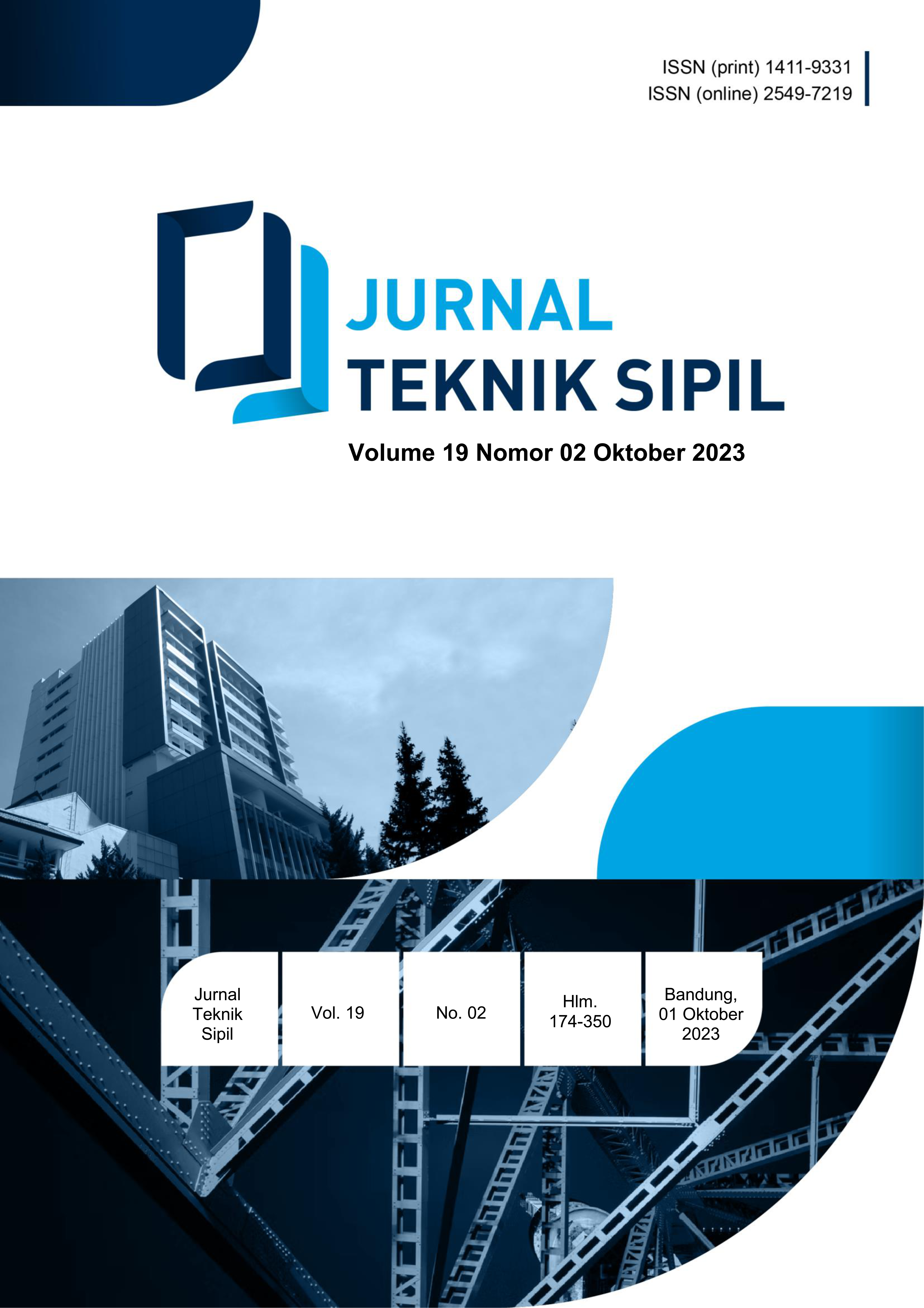Marshall Characteristics Analysis of Modified Asphalt Mixtures for Asphalt Concrete – Wearing Course (AC-WC) with Addition of Vehicle Tire Powder
DOI:
https://doi.org/10.28932/jts.v19i2.5580Keywords:
Asphalt Concrete – Wearing Course (AC –WC), Vehicle Tire Powder, Optimum Asphalt Content (KAO), Marshall StabilityAbstract
Roads are the infrastructure that sustains the growth of the economy and plays a very important role in the progress and development of a region. Asphalt functions as a binder in asphalt mixes, making it important to maintain its stickiness, softness, and pliability. Adding additives to asphalt is an alternative that can be used to maintain or increase the grip, soft point, and flexibility of the asphalt. Used motor vehicle tires are made from a variety of materials such as natural rubber, neoprene, chemicals, carbon black and certain oils. The characteristic of rubber is that it is durable and flexible or elastic. This study aimed to determine the value of Optimum Asphalt Content (KAO) in AC-WC mix using modified bitumen with wheel powder with 1% and 2% variations. The results of this study show the results of parametric data analysis for each KAO that the optimum value of the 3 KAOs is 6.18% with the addition of 1% asphalt + rubber tire powder. The parameter values are VIM 4.61%, VMA 18.52%, VFA 75.31%, Stability 1459 kg, and Flow 2.95 mm.Downloads
References
Badan Standarisasi Nasional. 2012. SNI ASTM C136:2012 Metode Uji Untuk Analisis Saringan Agregat Halus dan Agregat Kasar (ASTM C 136-06 IDT). Jakarta: Badan Standardisasi Nasional.
Badan Standardisasi Nasional. 2012. SNI 7619:2012 Metode Uji Penentuan Persentase Butir Pecah Pada Agregat Kasar. Jakarta: Badan Standardisasi Nasional.
Badan Standardisasi Nasional. 2016. SNI 1969:2016 Metode Uji Berat Jenis dan Penyerapan Air Agregat Kasar. Jakarta: Badan Standardisasi Nasional.
Badan Standardisasi Nasional. 2016. SNI 1970:2016 Metode Uji Berat Jenis dan Penyerapan Air Agregat Halus. Jakarta: Badan Standardisasi Nasional. Jurnal Ilmiah Rekayasa Sipil. Vol. 18.
Fathonah, W., Intari, D. E., & Ningrum, M. R. 2021. Pengaruh Penggunaan Abu Batu Apung Sebagai Filler Pada Campuran Laston AC-WC (Hot Rolled Sheet).
Hardiyatmo, H. C. 2015. Perancangan Perkerasan Jalan dan Penyelidikan Tanah. Cetakan Ke-2. Yogyakarta: Gadjah Mada University Press.
Kementerian Pekerjaan Umum. 2018. Spesifikasi Umum 2018 untuk Pekerjaan Konstruksi Jalan dan Jembatan. Revisi 3. Jakarta: Direktorat Jendral Bina Marga.
Rosyad, F., Prastyo, N., & Kasmuri, M. 2019. Analisis Pengaruh Penambahan Limbah Karet Terhadap Durabilitas dan Flexibilitas Aspal Beton (AC-WC). Jurnal Ilmiah Tekno. Vol. 14 No. 2.
Soehartono. 2015. Teknologi Aspal dan Penggunaannya dalam Konstruksi Perkerasan Jalan. Yogyakarta: CV. Andi Offset.
Sukirman, S. 2010. Perencanaan Tebal Struktur Perkerasan Lentur. Bandung: Nova.
Sukirman, S. 2016. Beton Aspal Campuran Panas. Bandung: Institut Teknologi Nasional.
Downloads
Published
How to Cite
Issue
Section
License
Copyright (c) 2023 Manda Tri Putra, Henggar Risa Destania, Febryandi Febryandi

This work is licensed under a Creative Commons Attribution-NonCommercial 4.0 International License.















